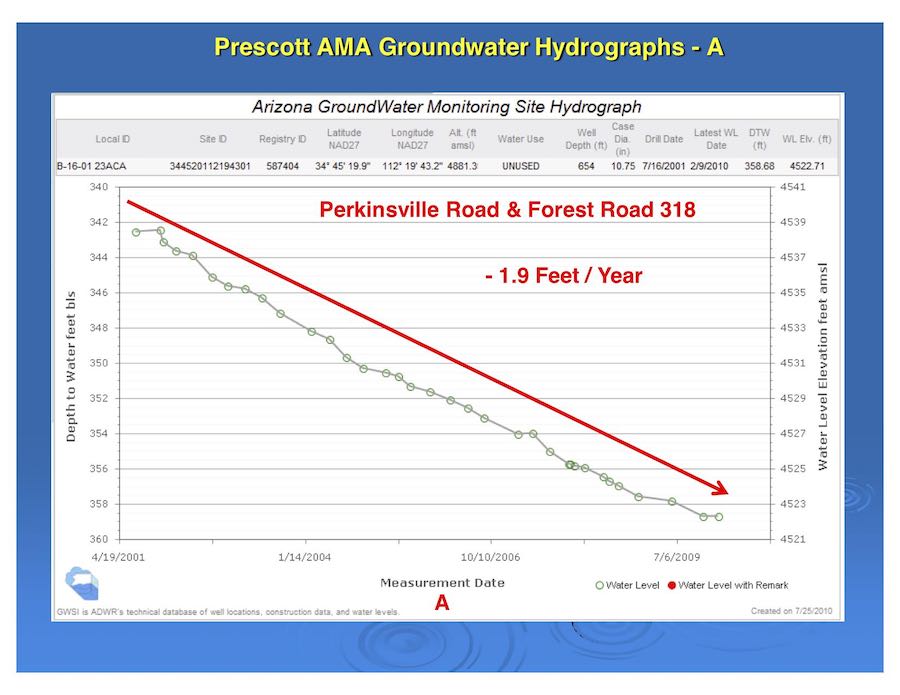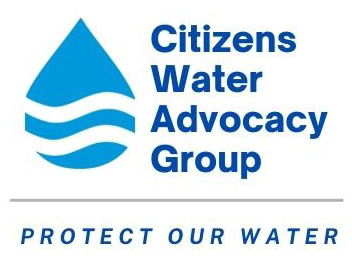Falling Water Levels in Family Wells
CWAG is often asked “How long will our (my) water last?” This is not the best question because not everyone will run out of water at the same time. Generally, municipal water supplies are sufficient for the near future but some family domestic wells on the edges of the aquifer are going dry now. The human and economic effects of falling water levels now stresses rural families, but is largely unnoticed by municipal water users.
Prescott obtains 100% of its municipal water supply from wells in downtown Chino Valley. Groundwater levels in that area have been falling for decades. Typically, for a well drilled 50 years ago, the depth to water will have increased about 80-100 feet. 
This decline in water level varies across the Prescott Active Management Area, (map below). As groundwater levels drop, the margins of the aquifer are drying up first. The greatest decreases are on the northwestern margin of the basin near the Granite Oaks subdivision on Williamson Valley Road, west of Chino Valley, and near the municipal production well fields in Chino Valley.

As long as the PrAMA aquifers remain in overdraft, water tables will continue to fall throughout the basin. All rural wells will be affected by increased pumping costs because the water must be pumped from a deeper water level. Eventually, all wells will exhibit diminished capacity, some will dry up completely, and water quality will decline, possibly from arsenic contamination.
Of all well user groups, large municipal systems will be least affected by falling groundwater levels. Prescott municipal wells are located in Chino Valley, outside of their primary service area in the most reliable and productive water area of the Little Chino Aquifer. As groundwater levels continue to fall, large municipal utilities can adapt because they have financial resources – that is bonding authority and a broad user base to share the increased costs of constructing pipelines, drilling new wells, and purifying water. Although falling water levels will affect them through cost increases, they will have water after other users have none.
Small private water systems serving a single subdivision typically have less financial means. Their wells are located within their service area. These locations are rarely in the most productive area in the aquifer. As groundwater tables fall they will experience reduced water quality and quantity and greater pumping costs. They may not be able to adapt.
Some of the domestic wells on the margins of the AMA are now going dry, causing devastating impacts on families. These families will suffer the greatest personal impacts from a dry well, ranging from the cost of a new well to loss of a large portion of the value of their home. CWAG believes that small domestic wells will be the first to suffer the consequences of decades of overdraft, and that these families have the least ability to adapt.
